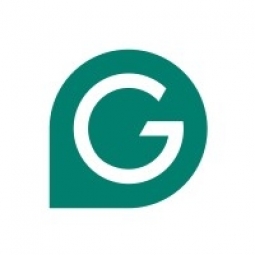技术
- 功能应用 - 企业资源规划系统 (ERP)
适用行业
- 水泥
- 国家安全与国防
适用功能
- 销售与市场营销
用例
- 语音识别
- 篡改检测
关于客户
HackerOne 是一家总部位于旧金山的公司,由黑客和安全领导者创办,他们热衷于让互联网更安全。该平台使公司能够与黑客社区合作,通过在安全漏洞被利用之前识别和报告安全漏洞来降低网络风险。 HackerOne 的客户范围从星巴克和任天堂等领先消费品牌到 Twitter 和 PayPal 等科技巨头,再到美国国防部等政府实体。迄今为止,HackerOne 已与来自全球 150 多个国家的黑客合作,在客户系统中发现了近 250,000 个有效漏洞。
挑战
HackerOne 是一个使公司能够与黑客社区合作识别和报告安全漏洞的平台,它面临着独特的挑战。该公司必须迎合两个不同的受众——黑客社区和企业业务。面临的挑战是与高级管理人员建立关系,向公共和私人组织传达价值,同时吸引全球各地的黑客,吸引他们参与社区、提高技能并扫描客户资产中的错误。这两种受众对于 HackerOne 的成功都至关重要。该公司的品牌声音必须平衡企业领导者期望的专业精神,同时继续吸引他们赖以支持其平台的黑客。 HackerOne 营销团队面临双重挑战:平衡品牌声音并始终如一地赋予其生命力。当他们着手刷新品牌形象和更新网站时,他们预见到了挑战。由于需要管理各种团队成员和承包商,保持网页、博客、电子书和销售材料中内容质量和语气的一致性具有挑战性。
解决方案
HackerOne 认识到,实现细致入微的品牌基调需要持续的指导和更加综合的方法。虽然传统的风格指南可以帮助公司记录和表达他们的品牌声音,但它们通常很难遵循,难以执行,并且很少有团队成员使用。因此,HackerOne 决定采取不同的方法。他们的目标是在每个接触点和每个渠道上尽最大努力,无论作者是谁。这意味着确保品牌声音在网页、博客、电子书和销售材料中保持一致。该公司还认识到需要平衡企业领导者期望的专业精神与吸引黑客社区的更非正式的语言。通过这样做,他们希望与观众建立信任并确保他们的平台取得成功。
运营影响
数量效益

Case Study missing?
Start adding your own!
Register with your work email and create a new case study profile for your business.
相关案例.

Case Study
System 800xA at Indian Cement Plants
Chettinad Cement recognized that further efficiencies could be achieved in its cement manufacturing process. It looked to investing in comprehensive operational and control technologies to manage and derive productivity and energy efficiency gains from the assets on Line 2, their second plant in India.

Case Study
Data Capture for Afghanistan Forces
Electronic equipments on the field of Afghanistan provided information on the status of the vehicle and to identify potential threats surrounding it to the British Force. The monitoring and interpretation of this data requires robust and sophisticated digitization for data capture and communication.

Case Study
Digital Transformation of Atlanta Grout & Tile: An IoT Case Study
Atlanta Grout & Tile, a Tile, Stone & Grout restoration company based in Woodstock, Georgia, was facing challenges with its traditional business model. Despite steady growth over the years, the company was falling behind the web revolution and missing out on the opportunity to tap into a new consumer base. They were using independent software from different vendors for each of their department information and workforce management. This resulted in a lot of manual work on excel and the need to export/import data between different systems. This not only increased overhead costs but also slowed down their response to clients. The company also had to prepare numerous reports manually and lacked access to customer trends for effective business decision-making.
Case Study
Enhancing Security and Compliance in Remitly's Global Money Transfer Service with Fastly
Remitly, an online remittance service, was faced with the challenge of securing its proprietary global transfer network. The company needed a security solution that could meet PCI requirements and protect customers' sensitive transactions through its mobile application. The solution had to be capable of defending against new and emerging attack types without impacting performance. Remitly also had to deal with irregular traffic patterns, such as a sudden spike in account transfers from a small network segment on the Pacific coastline of South America. The company needed to determine in real time whether such traffic indicated an attack or valid requests. A traditional web application firewall (WAF) would not be able to distinguish this traffic, potentially leading to customer frustration if the IP was blacklisted.

Case Study
Major Aerospace Company Automates Asset Management
The O&M division of an aerospace and global security company was using spreadsheets to manually track more than 3,000 assets assigned to students and staff. Maintaining audit trails for this high volume of equipment became increasingly time-consuming and challenging. The chore involved knowing precisely what equipment was on hand, what had been issued, its location and the name of the custodial owner of each item. Every aspect of this task was carried owner of each item. Every aspect of this task was carried out by individuals with spreadsheets. Manually documenting the full lifecycle of each asset added to the burden. This included tracking maintenance requirements and records, incidents and damages, repairs, calibrations, depreciation, and end-of-life data.








